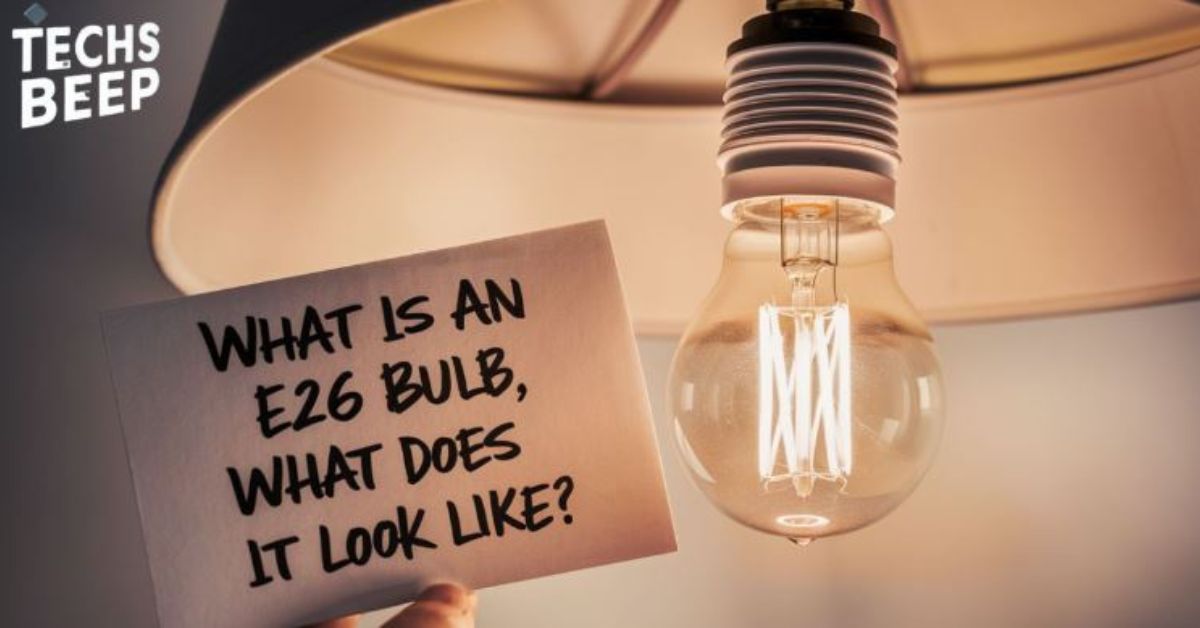E26 bulbs are a staple in North American lighting, found in countless homes and businesses. These versatile light sources derive their name from their standardized base design, which has remained largely unchanged for over a century.
E26 bulbs come in various shapes, sizes, and technologies, from traditional incandescent to modern LED options. Understanding their characteristics and applications can help you make informed decisions when selecting lighting for your space.
In this comprehensive guide, we’ll explore what E26 bulbs are, their distinctive features, and how to identify them. We’ll also delve into their history, applications, and compare them to other common bulb types.
Understanding E26 Bulbs: The Basics
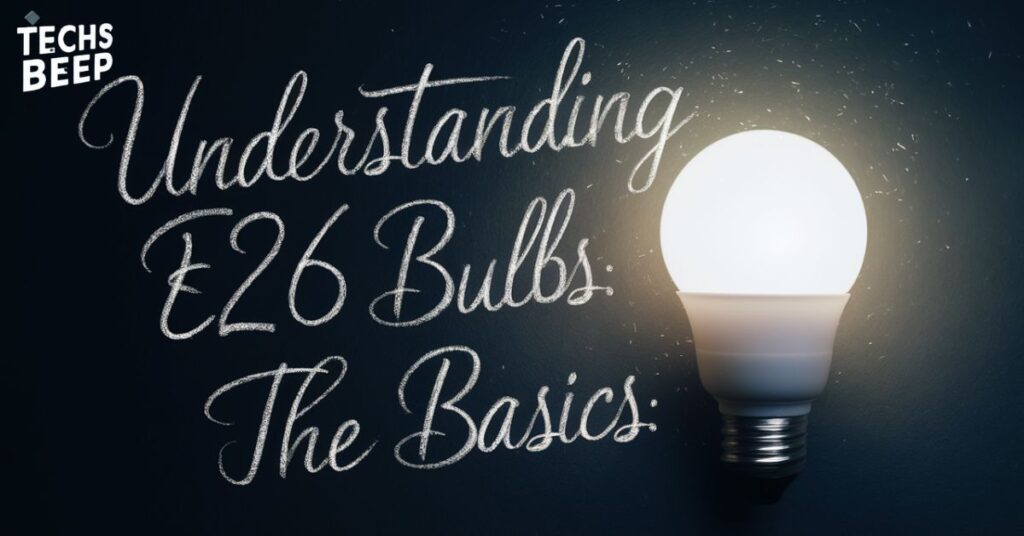
E26 bulbs are named for their base type, where “E” stands for Edison screw, and “26” indicates the diameter of the base in millimeters. This standardized base design allows for easy installation and replacement in a wide range of light fixtures.
These bulbs are the most common type used in North American households, fitting into standard light sockets found in lamps, ceiling fixtures, and various other lighting applications. Their widespread use makes them readily available and compatible with most domestic lighting needs.
While the base remains consistent, these bulbs come in different shapes, sizes, and technologies, including incandescent, fluorescent, halogen, and LED options. This versatility contributes to their enduring popularity in the lighting market.
The History of E26 Bulbs
The E26 base design dates back to the late 19th century when Thomas Edison developed it for his incandescent light bulbs. This standardized base quickly gained popularity due to its simplicity and reliability.
Over the years, the E26 base has remained largely unchanged, allowing for backwards compatibility with older fixtures. This consistency has been a key factor in its widespread adoption and continued use.
While the base design has stayed constant, the technology within these bulbs has evolved significantly. From early incandescent models to modern LED versions, these bulbs have adapted to changing energy efficiency standards and consumer preferences.
E26 vs. Other Common Base Types
While E26 is the standard in North America, other regions use different base types. For instance, Europe commonly uses the E27 base, which is slightly larger at 27mm in diameter.
Smaller base types like E12 (candelabra) and E17 (intermediate) are used for decorative or specialized lighting. Larger bases such as E39 (mogul) are typically found in industrial or high-wattage applications.
Understanding these differences is crucial when dealing with international lighting products or specialized fixtures, as base types are not always interchangeable between regions.
The Anatomy of an E26 Bulb
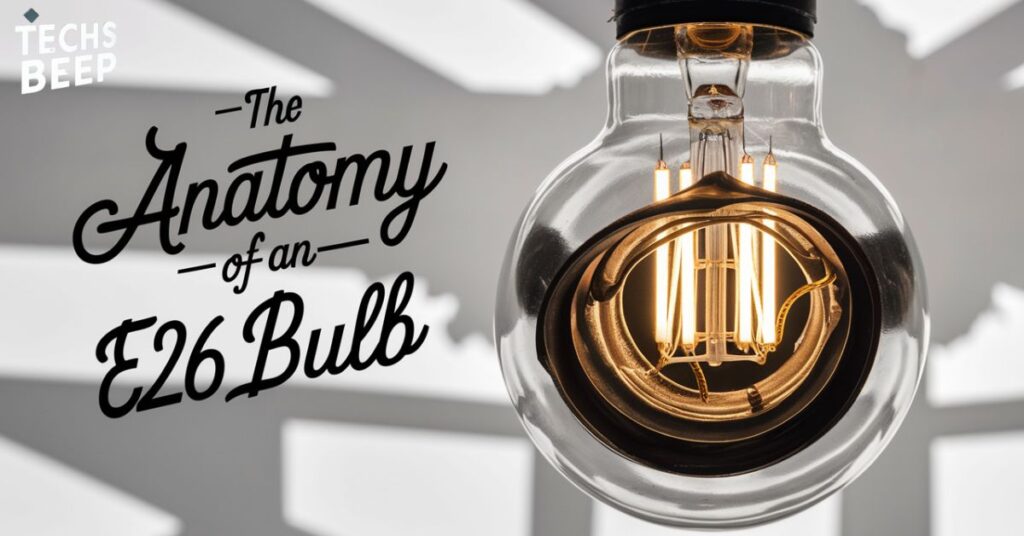
An E26 bulb consists of several key components that work together to produce light. The base, measuring 26mm in diameter, features screw threads that allow it to be easily inserted into compatible sockets.
Above the base is the bulb itself, which can come in various shapes depending on the bulb type and intended use. Common shapes include the classic A19 (pear-shaped), globe, reflector, and candle-style bulbs.
The interior of the bulb contains the light-producing element, which varies depending on the technology used. For instance, incandescent bulbs have a filament, while LED bulbs contain diodes and circuitry.
The E26 Base in Detail
The E26 base is typically made of aluminum and features a series of screw threads. These threads ensure a secure connection with the socket and also serve as part of the electrical contact.
At the bottom of the base is a small metal contact point. This point, along with the threaded sides, completes the electrical circuit when the bulb is screwed into a socket.
The design of the E26 base allows for easy installation and removal, making it user-friendly for the average consumer. This simplicity is one of the reasons for its enduring popularity in North American households.
Common Shapes of E26 Bulbs
While the base remains consistent, these bulbs come in various shapes to suit different lighting needs:
- A19: The most common shape, resembling a pear
- Globe: Spherical shape, often used for decorative purposes
- BR30: Bulged reflector, commonly used in recessed lighting
- PAR: Parabolic aluminized reflector, used for directional lighting
Each shape serves a specific purpose, influencing the light distribution and aesthetic appeal of the bulb. The choice of shape often depends on the fixture and the desired lighting effect.
Read this article: Fashion 6 Cell 10.8v 4001mah-5000mah Replacement Laptop Battery For Asus
How to Identify an E26 Bulb
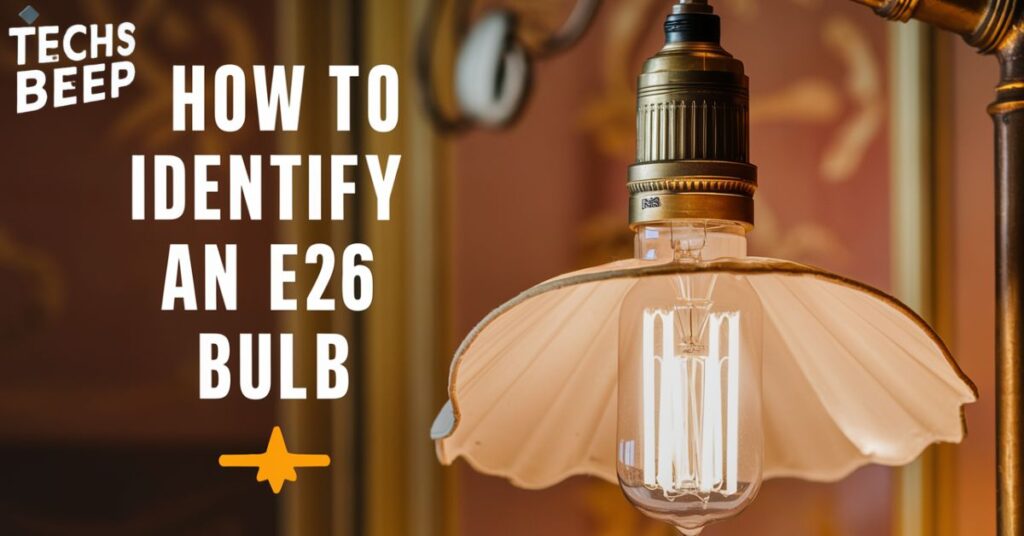
Recognizing an E26 bulb is relatively straightforward once you know what to look for. The most obvious feature is the screw base, which measures approximately one inch (26mm) in diameter.
When examining the bulb from the bottom, you’ll see the circular metal base with screw threads running along its sides. In the center of the base, there’s a small metal contact point.
Often, the bulb packaging or the bulb itself will be labeled with “E26” or “Medium Base” to indicate its base type. This information is typically found alongside other specifications like wattage and lumens.
Visual Cues for E26 Identification
Apart from the base size, there are other visual cues that can help you in identification:
- Size comparison: These bulbs are larger than candelabra (E12) bulbs but smaller than mogul (E39) bulbs.
- Shape variety: These bulbs come in various shapes, with A19 being the most common.
- Socket compatibility: These bulbs fit into standard household light sockets in North America.
Common Misconceptions About E26 Bulbs
Despite their widespread use, there are some common misconceptions about these bulbs:
- E26 refers to the bulb shape: This is incorrect. E26 only describes the base type, not the bulb shape.
- All household bulbs are E26: While common, not all household bulbs use E26 bases. Some decorative or specialized fixtures may use different base types.
- E26 and E27 are interchangeable: While similar, these bases have slight differences and are not always compatible.
Applications of E26 Bulbs
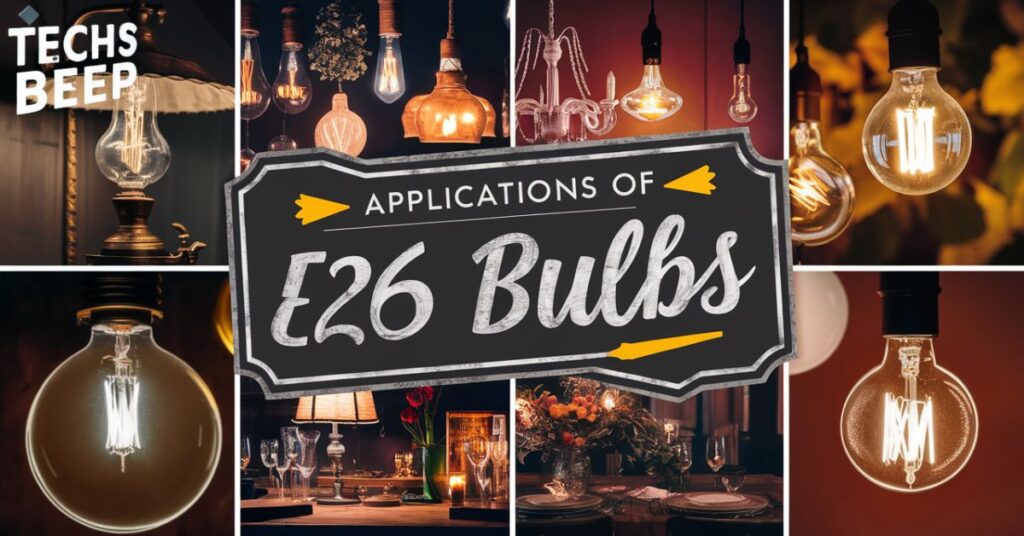
E26 bulbs are incredibly versatile and can be found in a wide range of lighting applications. Their standard size and widespread adoption make them suitable for most household lighting needs.
In residential settings, these are commonly used in table lamps, floor lamps, ceiling fixtures, and wall sconces. They’re also frequently found in outdoor lighting applications such as porch lights and garden lamps.
Beyond homes, they are often used in commercial and institutional settings like offices, schools, and retail spaces. Their versatility allows for easy replacement and maintenance in various lighting fixtures.
E26 Bulbs in Smart Lighting Systems
With the rise of smart home technology, these bulbs have found a new niche in smart lighting systems. Many manufacturers now produce smart LED bulbs with E26 bases that can be controlled via smartphone apps or voice assistants.
These smart bulbs often offer features like dimming, color changing, and scheduling. Their standard base allows them to be easily integrated into existing fixtures, making them a popular choice for home automation enthusiasts.
The combination of the familiar E26 base with advanced smart technology has helped bridge the gap between traditional lighting and modern, connected home systems.
Energy Efficiency and E26 Bulbs
The E26 base is compatible with various bulb technologies, including energy-efficient options:
- LED E26 bulbs: Offer high energy efficiency and long lifespan
- CFL E26 bulbs: Provide good energy savings at a lower initial cost
- Halogen E26 bulbs: More efficient than traditional incandescent, but less so than LED or CFL
By choosing energy-efficient bulbs, consumers can reduce their energy consumption and costs without needing to change their existing light fixtures.
Comparing E26 to Other Bulb Types
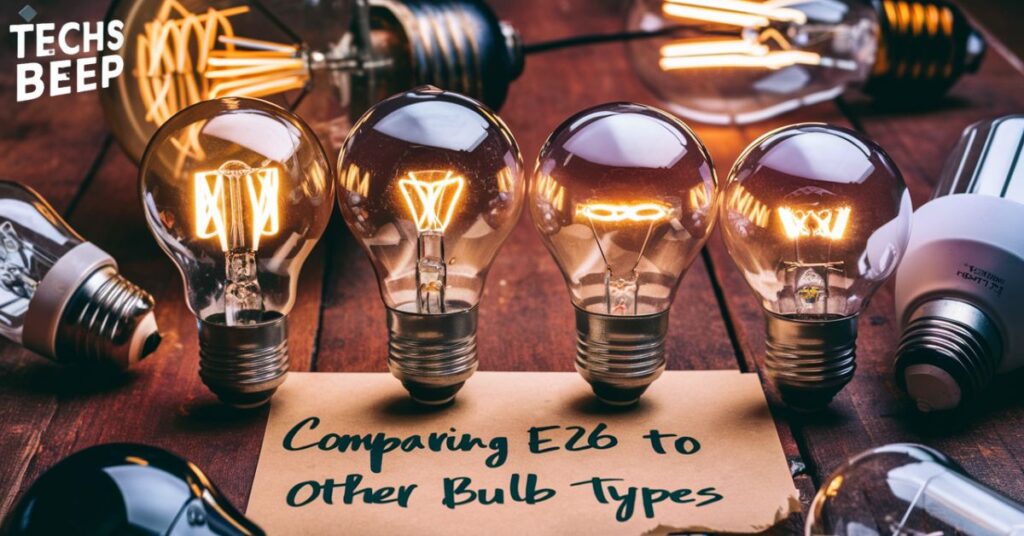
While E26 is a standard in North America, it’s helpful to understand how it compares to other common bulb types. This comparison can be particularly useful when dealing with international lighting products or specialized fixtures.
The main difference between E26 and other types lies in the base size and design. For instance, the E27 base used in Europe is slightly larger, while the B22 base common in the UK uses a bayonet fitting instead of a screw mechanism.
Understanding these differences can help prevent issues when purchasing bulbs or fixtures from different regions or for specific applications.
Table: Comparison of Common Bulb Base Types
| Base Type | Diameter | Common Use | Region |
| E26 | 26mm | General household | North America, Japan |
| E27 | 27mm | General household | Europe, Africa, South America |
| E12 | 12mm | Candelabra, decorative | Worldwide |
| B22 | 22mm | General household | UK, Australia, India |
| E39 | 39mm | High-wattage, industrial | Worldwide |
Advantages and Limitations of E26 Bulbs
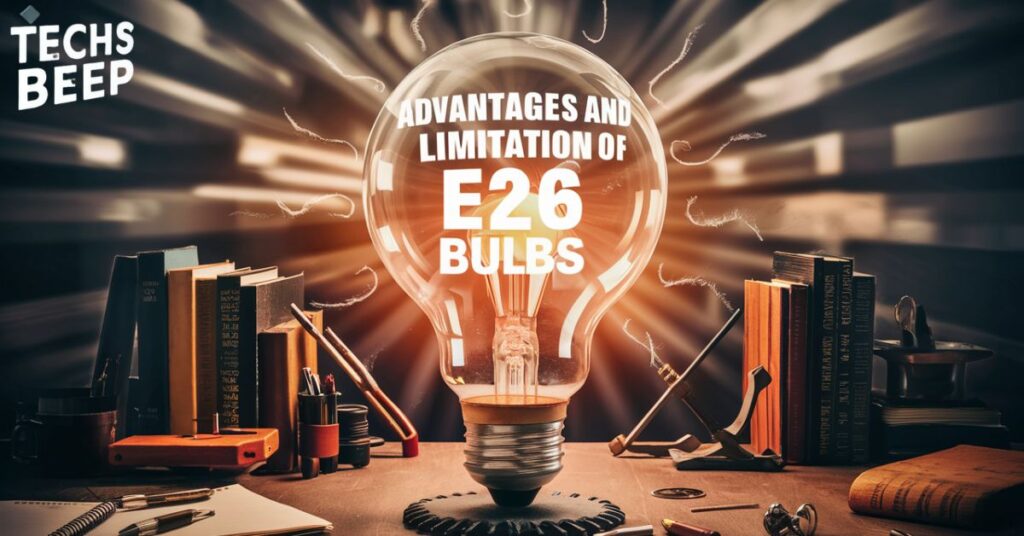
These bulbs offer several advantages that have contributed to their widespread use:
- Standardization: The common base size ensures compatibility with a wide range of fixtures.
- Availability: They are readily available in various types and from multiple manufacturers.
- Versatility: They can be used in numerous lighting applications, from table lamps to ceiling fixtures.
However, E26 bulbs also have some limitations:
- Regional differences: They may not be compatible with fixtures in countries that use different standards.
- Size constraints: The base size may be too large for some compact or specialized lighting designs.
- Energy efficiency varies: While efficient options exist, some (like incandescent) are less energy-efficient.
Durability and Lifespan of E26 Bulbs
The durability and lifespan of these bulbs vary significantly depending on the technology used:
- Incandescent E26 bulbs typically last around 1,000 hours
- CFL E26 bulbs can last up to 10,000 hours
- LED E26 bulbs often have a lifespan of 25,000 hours or more
The screw-in design of these bulbs generally provides a secure connection, contributing to their reliability. However, frequent removal and installation can potentially wear out the base over time.
Cost Considerations for E26 Bulbs
When considering their cost, it’s important to look beyond just the initial purchase price:
- Upfront cost: LED E26 bulbs tend to be more expensive initially, while incandescent are cheapest
- Energy costs: Efficient technologies like LED can significantly reduce long-term energy expenses
- Replacement frequency: Longer-lasting bulbs may have a higher upfront cost but need less frequent replacement
Calculating the total cost of ownership over time can provide a more accurate picture of the true cost of different options.
Choosing the Right E26 Bulb for Your Needs
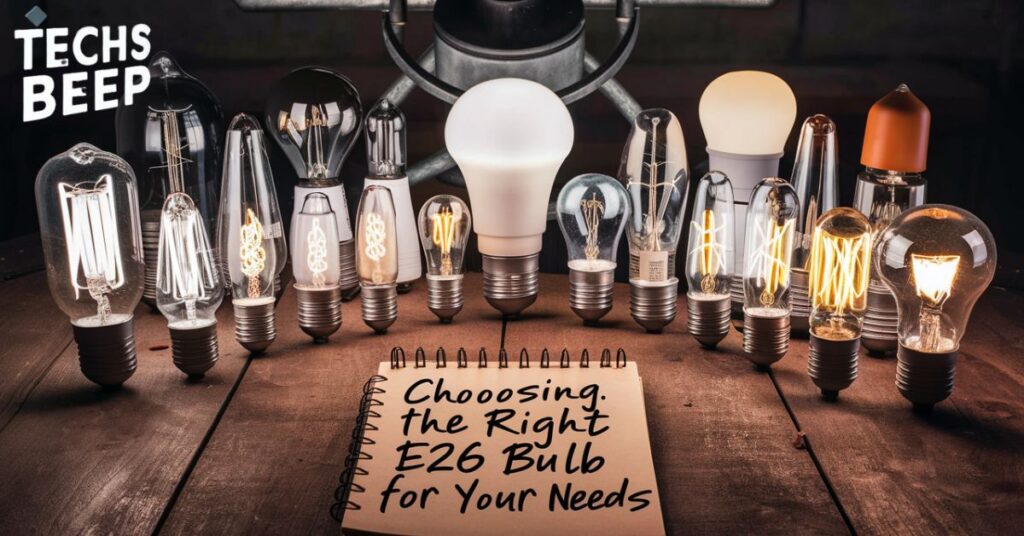
Selecting the appropriate bulb involves considering several factors:
- Wattage: Ensure the bulb’s wattage is compatible with your fixture
- Lumens: Consider the brightness needed for the intended space
- Color temperature: Choose between warm (yellowish) and cool (bluish) light tones
- Energy efficiency: Opt for LED or CFL for lower energy consumption
- Dimming capabilities: Check if the bulb is dimmable if you plan to use a dimmer switch
It’s also important to consider the specific application. For instance, a bright, cool-toned bulb might be ideal for a workspace, while a warm, dimmable bulb could be better for a living room.
Reading E26 Bulb Labels
Understanding bulb labels can help you make informed decisions:
- Wattage: Indicates power consumption
- Lumens: Measures light output
- Color temperature: Expressed in Kelvins (K), lower numbers for warmer light, higher for cooler
- Lifespan: Estimated hours of use
- Energy Star rating: Indicates energy efficiency
Pay attention to these details when comparing different options of these bulbs to ensure you’re getting the right bulb for your needs.
Common Mistakes When Buying E26 Bulbs
Avoid these common pitfalls when purchasing:
- Ignoring fixture compatibility: Ensure the bulb’s shape and size fit your fixture
- Overlooking color temperature: Mismatched color temperatures can create an unpleasant lighting environment
- Focusing solely on wattage: With efficient LED technology, lumens are a better indicator of brightness
- Neglecting dimming needs: Not all bulbs are dimmable, so check if this feature is needed
- Disregarding long-term costs: Consider energy efficiency and lifespan, not just the initial price
The Future of E26 Bulbs
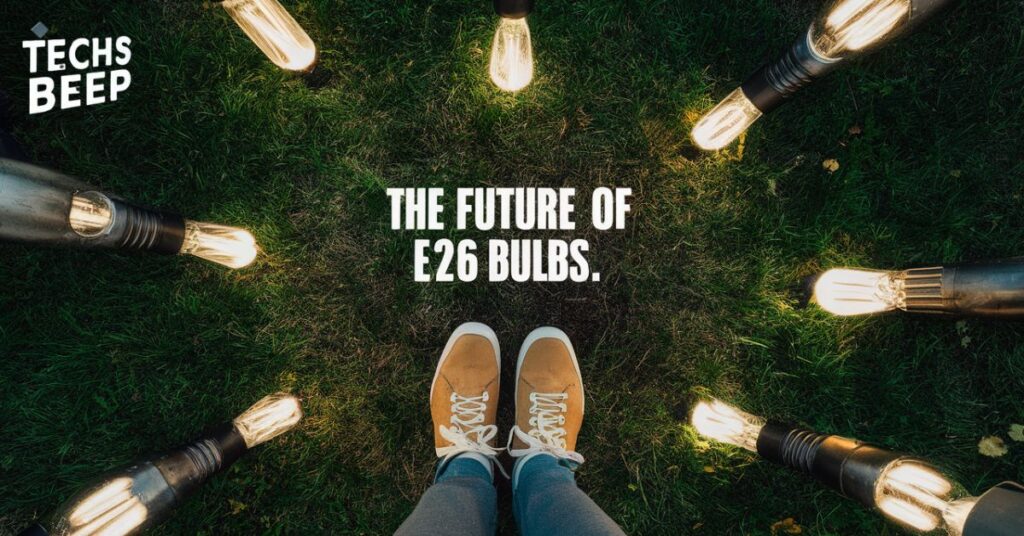
As lighting technology continues to evolve, the future of these bulbs remains bright. The standardized base ensures that new lighting technologies can be easily integrated into existing fixtures.
LED technology is likely to dominate the E26 bulb market in the coming years, offering improved efficiency and advanced features like smart connectivity. However, the familiar E26 base will continue to provide a bridge between new technologies and existing infrastructure.
Innovations in materials and manufacturing may lead to even more efficient and durable E26 bulbs, potentially extending lifespans and reducing environmental impact further.
Emerging Technologies in E26 Bulbs
Several emerging technologies are shaping the future of these bulbs:
- Smart lighting: Integration with home automation systems and voice control
- Tunable white light: Ability to adjust color temperature to match natural light cycles
- Li-Fi: Using light for data transmission, potentially turning bulbs into internet access points
These advancements could transform these bulbs from simple light sources into multifunctional devices that enhance our living and working environments.
Environmental Considerations
The lighting industry is increasingly focusing on sustainability, which affects its development:
- Energy efficiency: Continued improvements in LED technology to reduce power consumption
- Materials: Development of more eco-friendly materials for bulb construction
- Recycling: Enhanced programs for proper disposal and recycling of used bulbs
- Manufacturing: Efforts to reduce the environmental impact of bulb production processes
These initiatives aim to make them more environmentally friendly throughout their lifecycle.
Read this article: Tech Gaming DefStartup: Revolutionizing the Gaming Industry
Conclusion
E26 bulbs have been a cornerstone of lighting technology for over a century, providing a standardized solution for a wide range of lighting needs. Their versatility and widespread adoption have made them a staple in North American homes and businesses.
As we’ve explored, E26 bulbs come in various types, from traditional incandescent to modern LED and smart bulbs. Understanding their characteristics, advantages, and limitations can help you make informed decisions when choosing lighting for your space.
Looking to the future, these bulbs are likely to continue evolving with new technologies while maintaining their familiar form factor. This balance of innovation and compatibility ensures that they will remain a relevant and important part of our lighting landscape for years to come.
FAQs
What does the “E” in E26 stand for?
The “E” stands for Edison screw, named after Thomas Edison who invented this base type.
Are E26 and A19 bulbs the same thing?
No, E26 refers to the base type, while A19 describes a common bulb shape. Many A19 bulbs use E26 bases, but not all are A19-shaped.
Can I use an E26 bulb in an E27 socket?
In most cases, these bulbs can fit in E27 sockets, but it’s not guaranteed to be safe or function properly due to slight differences in specifications.
What’s the difference between E26 and medium base bulbs?
There is no difference; “medium base” is another term for these bulbs in North America.
Are all E26 bulbs dimmable?
No, not all bulbs are dimmable. Check the bulb’s specifications to ensure it’s compatible with dimmer switches if needed.
